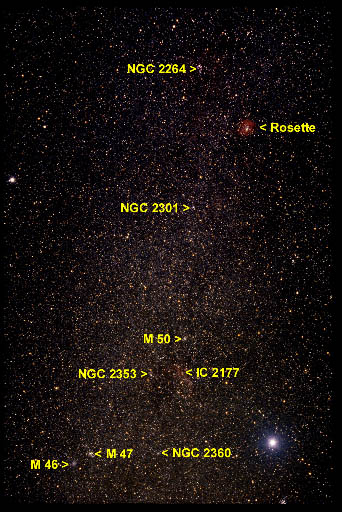
Names:
| English: | Unicorn, Lesser Dog | Spanish: | Unicornio, Can menor |
|---|---|---|---|
| German: | Einhorn, Kleiner Hund | French: | Licorne, Petit Chien |
Canis Minor is easy to find in the winter sky with its brightest star Procyon (visual 0.4 mag), whereas the extended constellation Monoceros is quite faint. Alpha Monocerotis, the brightest star in Monoceros that is visible in the lower left part, has an apparent brightness of just 3.9 mag. In mid of February Monoceros culminates at about 21:30 LT (9 pm) and the position is on the celestial equator, i.e. a declination of 0 degrees just like Orion, which is to the west (right).
The galactic equator is crossing our field of view from the north to the south, including a couple of interesting deep sky objects. Most famous is the so called Rosette Nebula (visible as red object in the upper right), an extended circular HII-region with an enclosed young Open Star Cluster that ionizes the surrounding gas with its high energetic UV radiation. And a couple more Open Star Clusters can be identified in the above photography.